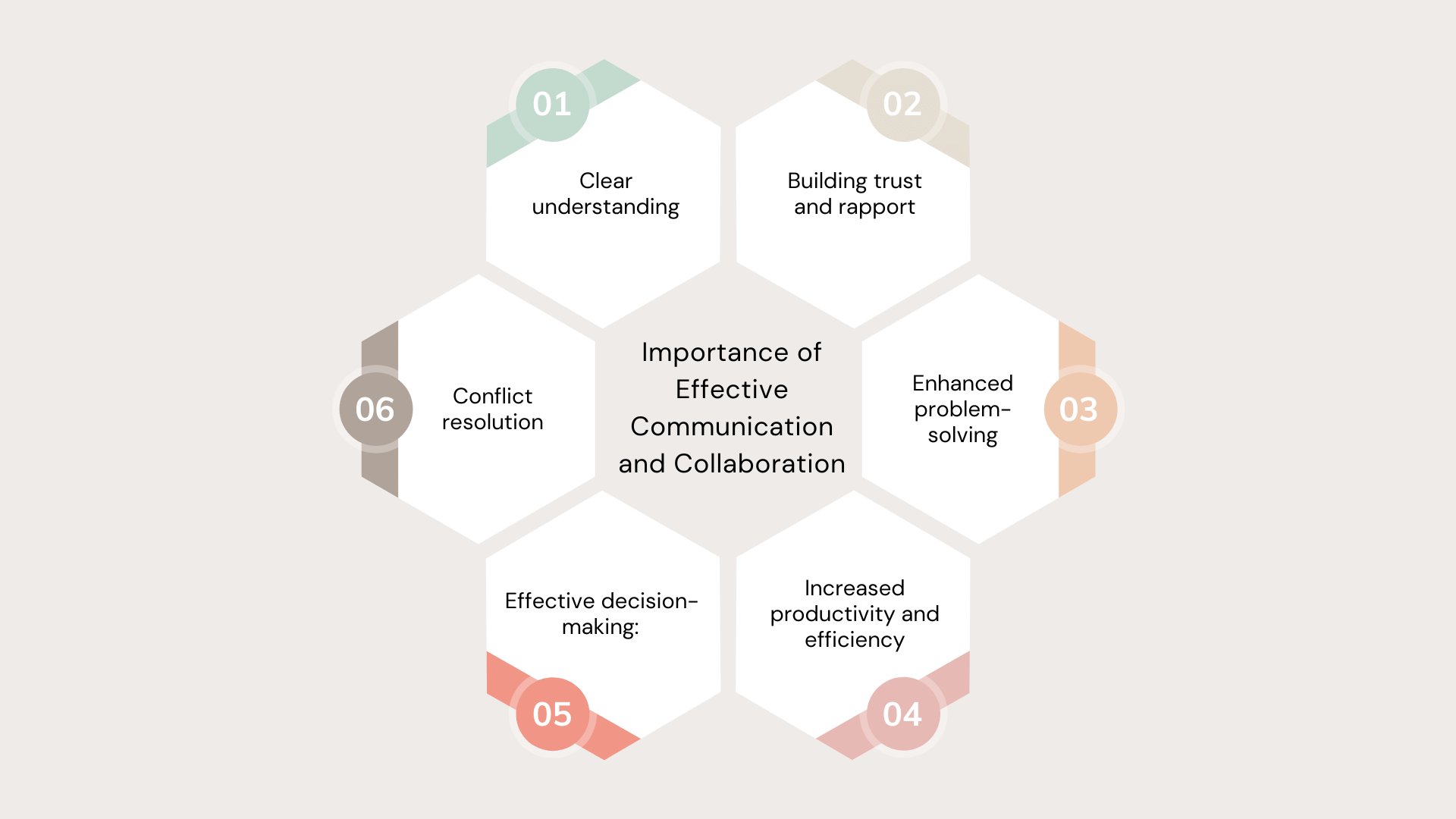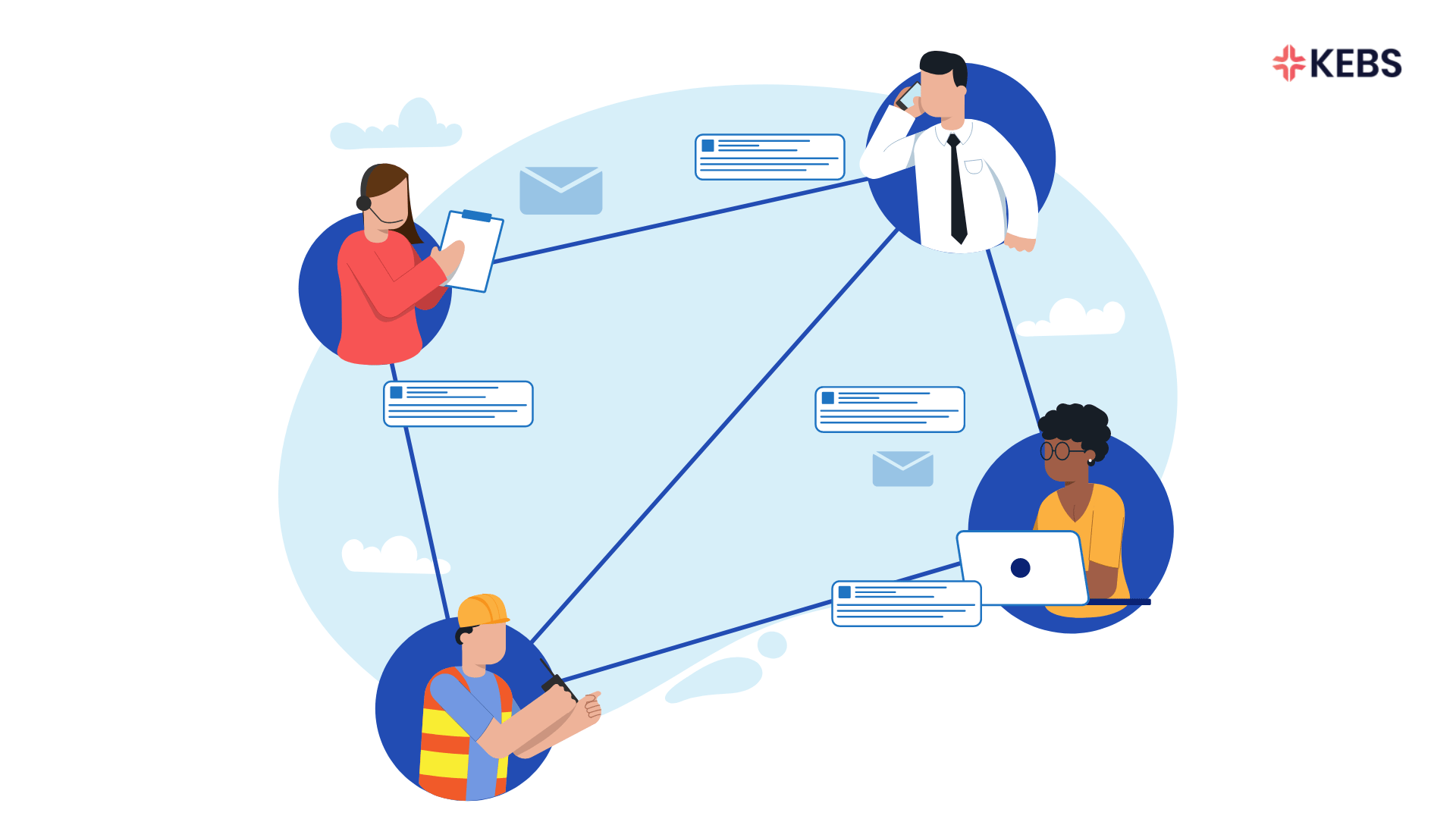
Home »
Effective Communication and Collaboration in Resource Management for PSA
Enhance resource management in PSA through effective communication and collaboration strategies.
Overview of Resource Management
Resource management involves effectively allocating and utilizing resources such as personnel, equipment, and materials to meet project objectives and optimize productivity.
It requires clear communication and collaboration among team members to ensure everyone understands their roles and responsibilities. A centralized resource management system or software helps track resource availability and allocation in real-time.
Strategic planning and periodic review of resource allocation are crucial to optimize productivity and address any imbalances or bottlenecks. Continuous improvement through feedback and training ensures ongoing enhancement of resource management processes.
Importance of Effective Communication and Collaboration
Effective communication and collaboration are vital in various aspects of personal and professional life. Here are the key reasons highlighting their importance:
- Clear understanding: Effective communication ensures that information and ideas are conveyed accurately. It promotes a shared understanding among individuals or teams, reducing mistakes, conflicts, and errors.
- Building trust and rapport: Good communication fosters trust and strengthens relationships. When individuals communicate openly, honestly, and respectfully, it establishes a foundation of trust, creating a positive and collaborative environment.
- Enhanced problem-solving: Collaboration brings together diverse perspectives, knowledge, and expertise. By encouraging open dialogue and active participation, teams can generate innovative ideas and find effective solutions to complex problems.
- Increased productivity and efficiency: When communication flows smoothly, tasks are executed efficiently, and productivity improves. Clear communication channels and collaboration enable streamlined workflows, coordinated efforts, and better time management.
- Effective decision-making: Open and transparent communication supports informed decision-making. By sharing information, insights, and perspectives, individuals can make well-informed choices that align with organizational goals and objectives.
- Conflict resolution: Effective communication and collaboration help address conflicts constructively. Through open dialogue, active listening, and empathy, parties can understand each other’s perspectives, find common ground, and work towards resolution.

Understanding the Key Elements of Effective Communication
Effective communication encompasses several key elements that contribute to its success. Here are the essential elements to understand:
- Clear and concise message: The message should be clear, straightforward, and easy to understand. It should avoid uncertainty and convey the intended meaning without confusion.
- Active listening: Active listening involves giving full attention to the speaker, understanding their message, and responding correctly. It requires focus, empathy, and the ability to understand not just the words spoken but also the underlying emotions and intentions.
- Feedback: Feedback is crucial in communication to ensure that the message has been received and understood correctly. It involves providing or seeking explanation, asking questions, and actively engaging in dialogue to ensure effective communication.
Clarity of purpose and audience: Effective communication requires a clear understanding of the purpose and the intended audience.
| Essential Elements of Effective Communication | Explanation | Importance |
| Clear and Concise Message | Message should be straightforward, avoiding ambiguity, and easily understood. | Prevents confusion and ensures accurate transmission of information. |
| Active Listening | Listening fully, understanding the speaker’s message and emotions, and responding appropriately. | Builds rapport, promotes empathy, and leads to mutual understanding. |
| Feedback | Providing or seeking clarification, asking questions, and ensuring message comprehension. | Verifies understanding, addresses misconceptions, and promotes open dialogue. |
Clearly define roles and responsibilities
Start by identifying the key roles required for the project or task at hand. Determine the specific functions and areas of expertise needed to achieve the desired outcomes. Once roles are identified, assign clear responsibilities to each team member. Clearly define the tasks, activities, and output that each person is accountable for. This clarity helps avoid confusion and ensures everyone knows what is expected of them.
Clearly outline the authority levels and decision-making processes within the team. Define who has the final say on certain matters and ensure that decision-making power is correctly delegated. Define the boundaries and limitations of each role to avoid overlapping responsibilities or conflicts. Clarify the scope of work and establish guidelines for collaboration, coordination, and communication between roles.
Regularly review and update them as needed, considering any changes in project goals, team dynamics, or external factors. This ongoing evaluation helps ensure that roles remain relevant and effectively support the project’s objectives.
Teams can work together and achieve success by following guidelines, communicating openly, and maximizing their potential.
Establish open lines of communication
Identify and create appropriate communication channels that facilitate open dialogue within the team. This can include email, instant messaging platforms, project management tools, or dedicated team communication platforms.
Encourage a culture where team members feel comfortable expressing their thoughts, ideas, concerns, and feedback openly. Promote active listening and respect for diverse opinions. Schedule regular team meetings to discuss project progress, updates, challenges, and upcoming tasks. These meetings provide a forum for team members to share information and collaborate effectively.
Implement collaborative tools and technologies that allow team members to work together seamlessly. This can include shared document storage, virtual whiteboards, or project management platforms that enable real-time collaboration and information sharing. Address conflicts in communication promptly and constructively. Encourage open dialogue and provide a safe space for resolving conflicts, ensuring that all team members feel heard and understood.
Promote communication and collaboration between different teams or departments involved in the project. Facilitate knowledge sharing, coordination, and cooperation across boundaries to enhance overall project outcomes. By establishing open lines of communication, teams can foster a collaborative environment, enhance understanding, and improve overall project outcomes.

Foster a collaborative environment
Create an atmosphere where team members feel encouraged and comfortable sharing their ideas, opinions, and feedback openly. Establish an open-door policy and actively listen to and value diverse perspectives. Emphasize the importance of teamwork and the collective pursuit of shared goals.
Encourage collaboration rather than competition among team members. Foster a sense of unity and purpose to drive collaboration. Trust is essential for effective collaboration. Foster an environment where team members trust and support one another. Promote a safe environment where people can take risks, speak freely, and learn from mistakes without worrying about criticism or consequences.
Clearly define roles and responsibilities within the team. Ensure that each team member understands their contributions and how they fit into the larger picture. Avoid uncertainty and promote a shared understanding of everyone’s contributions.
Acknowledge and celebrate the achievements and contributions of the team as a whole. Recognize individual efforts and teamwork to foster a sense of accomplishment and motivation. By fostering a collaborative environment, teams can harness the collective intelligence and creativity of their members, leading to enhanced problem-solving, innovation, and overall team performance.
Utilize a centralized resource management system

A centralized system provides real-time visibility into resource availability, utilization, and allocation. This allows teams to make informed decisions and adjustments based on up-to-date information.
The system allows for accurate tracking of resources, including personnel, equipment, and materials. It helps maintain a comprehensive record of resource details, such as skills, availability, capacity, and project assignments.
A centralized system enables teams to optimize resource allocation. It helps with knowing how much resources are available and how much can be used for projects.
Teams can enhance collaboration and decision-making by utilizing a centralized resource management system. This system helps allocate resources efficiently and optimize project outcomes.
Maintain accurate and up-to-date resource data
Ensure that resource data is updated regularly to reflect changes in availability, skills, roles, and assignments. This includes adding new resources, removing outdated or no longer available resources, and updating information for existing resources.
Establish a standardized format for resource data to ensure consistency and ease of understanding. Use predefined fields and categories for resource information, such as skills, experience, certifications, availability, and contact details. Maintain a centralized repository or database where all resource data is stored. This ensures that the information is easily accessible, up-to-date, and readily available for resource allocation and decision-making.
Capture important attributes related to resources, such as skills, expertise, certifications, experience levels, and availability. Include details on their roles and responsibilities, preferred working hours, and any specific constraints or limitations.
Organizations can make better decisions and allocate resources effectively by having accurate and current data. This helps ensure that the right resources are assigned to the right tasks at the right time.
Encourage cross-functional collaboration
Identify and address any existing silos or barriers that hinder collaboration. Encourage teams to collaborate beyond their own functional boundaries and facilitate cross-departmental interactions.
Ensure that organizational goals and objectives are clearly communicated across all functions. Help teams understand how their work contributes to the larger picture, encouraging them to collaborate and align efforts towards common goals.
By encouraging cross-functional collaboration, organizations can tap into the collective intelligence and capabilities of their diverse teams. It leads to improved problem-solving, innovation, and overall organizational performance.
Provide ongoing training and development
Conduct regular assessments to identify skill gaps, development areas, and training needs within the organization. This can be done through performance evaluations, feedback mechanisms, or surveys to gather input from employees and managers.
Develop a well-rounded training plan that addresses the identified needs and aligns with the organization’s goals and strategies. The plan should include a mix of technical, professional, and soft skills training to cater to diverse development requirements.
Offer a range of training methods to accommodate different learning styles and preferences. This can include workshops, seminars, online courses, on-the-job training, mentoring programs, and external training opportunities.
Establish a repository of learning resources, such as online libraries, training materials, job aids, and knowledge-sharing platforms. Encourage employees to access these resources to support their ongoing learning and development.
By providing ongoing training and development opportunities, organizations can empower their employees to enhance their skills, stay relevant in a rapidly changing work environment, and contribute to the overall success of the organization.
Seek feedback and continuous improvement
Conduct regular assessments to identify skill gaps, development areas, and training needs within the organization. This can be done through performance evaluations, feedback mechanisms, or surveys to gather input from employees and managers.
Develop a well-rounded training plan that addresses the identified needs and aligns with the organization’s goals and strategies. The plan should include a mix of technical, professional, and soft skills training to cater to diverse development requirements.
Offer a range of training methods to accommodate different learning styles and preferences. This can include workshops, seminars, online courses, on-the-job training, mentoring programs, and external training opportunities.
Establish a repository of learning resources, such as online libraries, training materials, job aids, and knowledge-sharing platforms. Encourage employees to access these resources to support their ongoing learning and development.
KEBS – Resource Management Software

KEBS is a resource management software designed to help businesses effectively manage their projects, resources, and finances. It offers a range of features and functionalities to optimize resource allocation, improve productivity, and enhance project outcomes. Here are some key features of KEBS as a resource management software:
- KEBS allows you to efficiently allocate and schedule resources for your projects. It provides a centralized view of resource availability, skills, and workload, enabling you to make informed decisions when assigning resources.
- With KEBS, you can track the utilization and performance of your resources. It provides real-time visibility into resource activities, time tracking, and progress, helping you monitor resource allocation and identify areas for improvement.
- KEBS enables you to maintain a database of resource skills, qualifications, and competencies. This information helps you match the right resources with the required skills to ensure successful project execution.
- KEBS integrates financial management functionalities, such as budgeting, cost tracking, and invoicing, into its resource management capabilities. This allows you to track project costs, monitor budget adherence, and generate accurate financial reports.
| Key Features of KEBS as a Resource Management Software: | Description |
| Efficient Resource Allocation | KEBS offers efficient allocation and scheduling of resources, providing a centralized view of availability, skills, and workload for informed decision-making. |
| Real-time Resource Tracking | KEBS provides real-time visibility into resource activities, time tracking, and progress, aiding in effective monitoring and improvement. |
| Skill Database Management | KEBS enables the maintenance of a resource skills database, ensuring optimal resource-skill alignment for successful project execution. |
| Integrated Financial Management | KEBS integrates financial functionalities like budgeting, cost tracking, and invoicing, facilitating cost monitoring, adherence, and accurate reporting. |
Conclusion
In conclusion, effective communication and collaboration play a crucial role in resource management for Professional Services Automation (PSA) software like KEBS.
Having good communication and teamwork in managing resources is crucial for improving efficiency and utilizing resources effectively. A strong PSA software like KEBS can greatly aid in achieving these goals. Additionally, it can also contribute to the success of projects and the organization as a whole.
By prioritizing these aspects, organizations can achieve their growth objectives, maximize productivity, and deliver exceptional services to their clients.
Contact us to know more!









